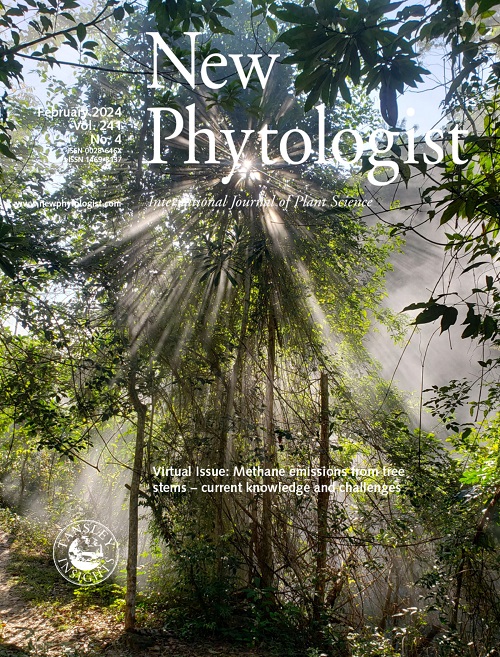Host plant height explains the effect of nitrogen enrichment on arbuscular mycorrhizal fungal communities
IF 8.1
1区 生物学
Q1 Agricultural and Biological Sciences
引用次数: 0
Abstract
- Nitrogen (N) enrichment is widely known to affect the root-associated arbuscular mycorrhizal fungal (AMF) community in different ways, for example, via altering soil properties and/or shifting host plant functional structure. However, empirical knowledge of their relative importance is still lacking.
- Using a long-term N addition experiment, we measured the AMF community taxonomic and phylogenetic diversity at the single plant species (roots of 15 plant species) and plant community (mixed roots) levels. We also measured four functional traits of 35 common plant species along the N addition gradient.
- We found divergent responses of AMF diversity to N addition for host plants with different innate heights (i.e. plant natural height under unfertilized treatment). Furthermore, our data showed that species-specific responses of AMF diversity to N addition were negatively related to the change in maximum plant height. When scaling up to the community level, N addition affected AMF diversity mainly through increasing the maximum plant height, rather than altering soil properties.
- Our results highlight the importance of plant height in driving AMF community dynamics under N enrichment at both species and community levels, thus providing important implications for understanding the response of AMF diversity to anthropogenic N deposition.
寄主株高解释了氮富集对丛枝菌根真菌群落的影响
众所周知,氮(N)富集会以不同的方式影响根相关丛枝菌根真菌(AMF)群落,例如通过改变土壤性质和/或改变寄主植物的功能结构。然而,对其相对重要性的经验知识仍然缺乏。通过长期加氮试验,在单种植物(15种植物的根)和混合植物群落(根)水平上测定了AMF群落的分类和系统发育多样性。我们还沿着N添加梯度测量了35种常见植物的4个功能性状。研究发现,不同天然高度(即未施肥处理下植物自然高度)寄主植物AMF多样性对N添加的响应存在差异。此外,我们的数据表明,AMF多样性对N添加的物种特异性响应与最大株高的变化呈负相关。当扩展到群落水平时,氮肥对AMF多样性的影响主要是通过增加最大株高,而不是通过改变土壤性质。我们的研究结果强调了植物高度在物种和群落水平上驱动氮富集条件下AMF群落动态的重要性,从而为理解AMF多样性对人为氮沉降的响应提供了重要意义。
本文章由计算机程序翻译,如有差异,请以英文原文为准。
求助全文
约1分钟内获得全文
求助全文
来源期刊

New Phytologist
PLANT SCIENCES-
CiteScore
17.60
自引率
5.30%
发文量
728
审稿时长
1 months
期刊介绍:
New Phytologist is a leading publication that showcases exceptional and groundbreaking research in plant science and its practical applications. With a focus on five distinct sections - Physiology & Development, Environment, Interaction, Evolution, and Transformative Plant Biotechnology - the journal covers a wide array of topics ranging from cellular processes to the impact of global environmental changes. We encourage the use of interdisciplinary approaches, and our content is structured to reflect this. Our journal acknowledges the diverse techniques employed in plant science, including molecular and cell biology, functional genomics, modeling, and system-based approaches, across various subfields.
 求助内容:
求助内容: 应助结果提醒方式:
应助结果提醒方式:


